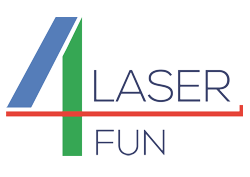Results of the work in the Laser4Fun project has been published as:
Jean-Michel Romano, Antonio Garcia-Giron, Pavel Penchev, Stefan Dimov. Triangular self-organized surface textures produced by femtosecond laser irradiation on stainless steel and titanium alloy. 2nd World Congress on Micro and Nano Manufacturing (September 2018); doi: 10.3850/978-981-11-2728-1_09
Abstract
The large area uniformity of laser-induced periodic surface structures (LIPSS) on ferritic stainless steel and titanium alloy is studied. A single-step process was designed to generate low spatial frequency LIPSS (LSFL) over relatively large areas. For the first time, a new LIPSS morphology is fabricated using near-infrared ultrashort pulsed laser. Extraordinarily uniform self-organized triangular structures in hexagonal arrangements were fabricated in the subwavelength range. The generation of such LSFL was found to be highly repeatable, not material dependent but very sensitive to the used laser processing settings. Therefore, the sensitivity of triangular-LSFL formation to pulse fluence and scanning speed were investigated.
